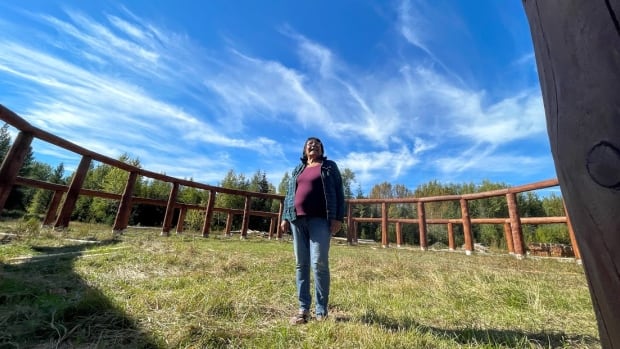
WARNING: This story contains distressing details.
When Clifford Lebrun looks out his back window, he sees a giant structure taking shape.
Every day, the chief of the Lhtako Dené Nation near Quesnel, B.C., watches band members with hammers and chainsaws work alongside contractors, building a circular powwow arbour that’s open to the sky.
At each entrance to the arbour, a community member has created colourful, intricate carvings for each of the nation’s clans: bear, beaver, eagle and frog.
For the chief, the building is a point of pride, a cultural treasure for the community of about 190 people — and a symbol of healing.
“We suffered some real bad tragedy last year with a death and then a double suicide, all on the same day. It affected every single person in our community,” Lebrun said.
“So when we started building this arbour, it was something the community could rally around, and put our pain behind us.”
The project is now involving all corners of community, from providing construction work to inspiring Lhtako Dené members to explore or rediscover different aspects of their culture.
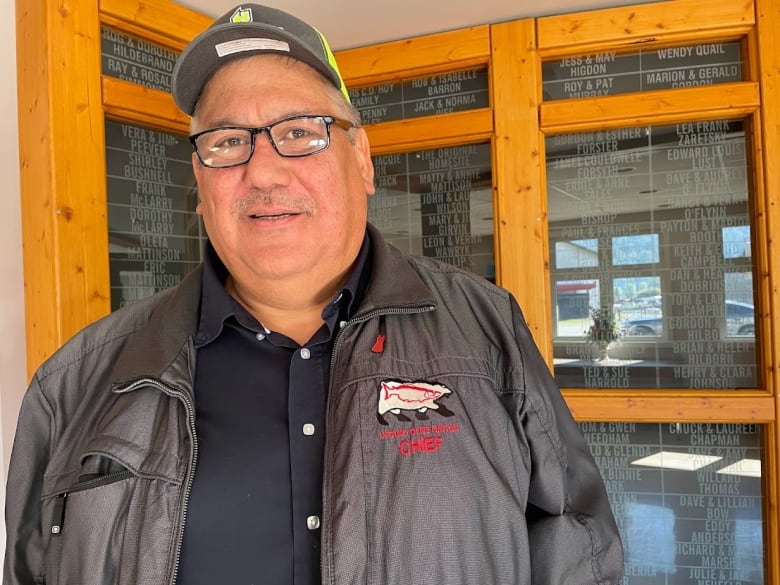
‘Leaving a legacy’
Lhtako band administrator Maynard Bara calls the arbour “our Roman coliseum,” where hundreds of spectators will be able to watch powwow dancers compete.
“A lot of the work is being done by our members, and that’s huge,” said Bara. “They’re putting their hands on it and leaving a legacy for their children and grandchildren.”
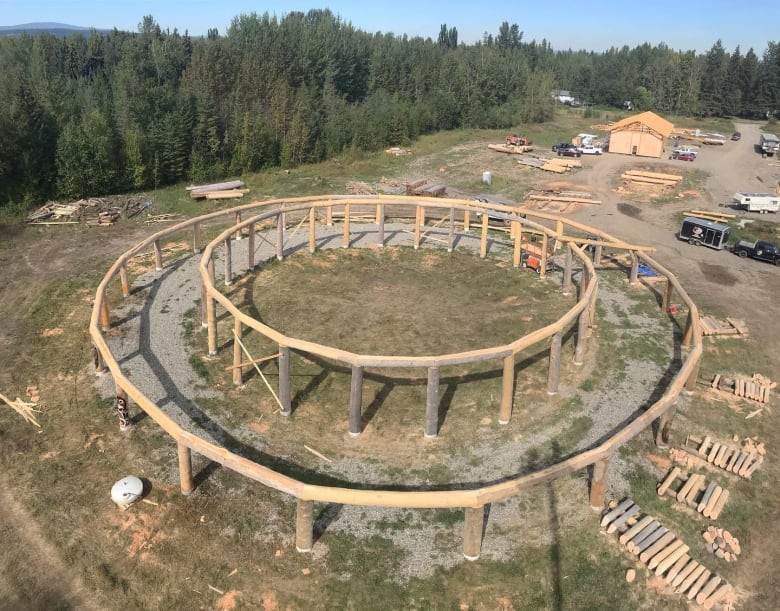
On the construction site, Connelly Bingo Longe’s sweatshirt is dappled with sawdust.
He’s hand-milling giant fir logs, harvested from Lhtako traditional territory, to build rafters for the arbour.
“It brings new things to the reservation,” he said. “There’s lots of work for the young guys … We’re learning our culture more.”
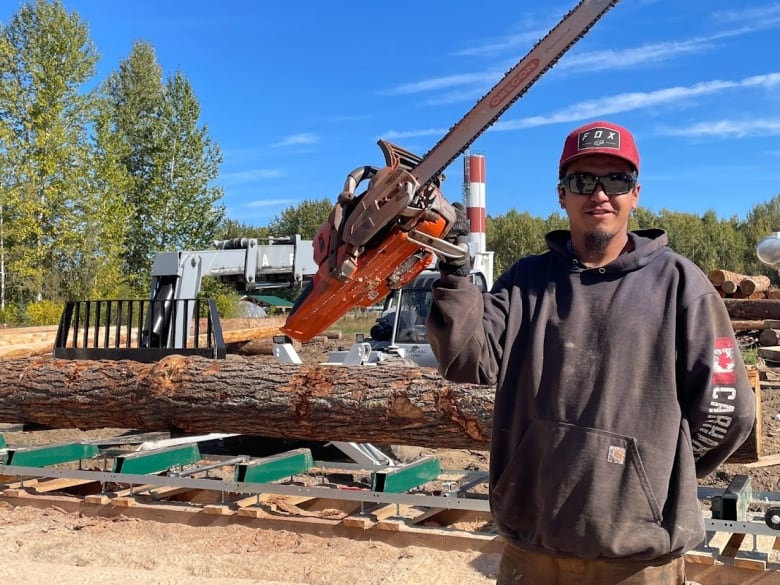
Young women from the community already perform at powwows elsewhere, competing in jingle dance and fancy shawl, but now the community’s young men are showing an interest in competing, band councillor Raymond Aldred says. There are also plans to teach the youth grass dancing.
Lhtako elder Terry Boucher says her Monday sewing group is now crafting moccasins for powwow dancers and regalia like ribbons skirts and grass dancing outfits.
“It’s basically coming back to our culture, that the residential school and the government took away from us,” said Boucer, a family support worker.
“They told us we were heathens and we’d all go to hell. In a lot of our villages, regalia was put in the middle of the village and our regalia was burned, in an effort to eliminate our people. But, guess what? We’re still here.
“We’re really pleased with the power of the arbour,” she said. “We’ve been dreaming of it for a long time.”
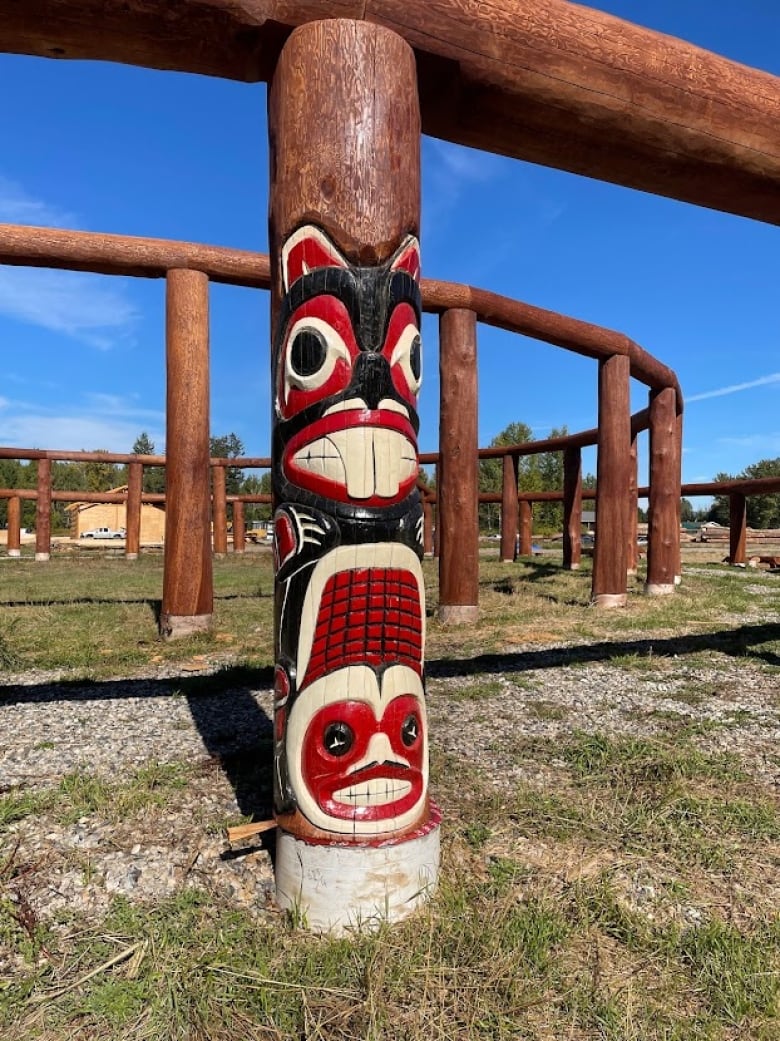
Lebrun said the gathering place has special meaning for him.
“I’m a Sixties Scoop kid. I grew up in a foster home. But I eventually came back here and I haven’t left. The important thing is, I’m home,” he said.
If you or someone you know is struggling, here’s where to get help: